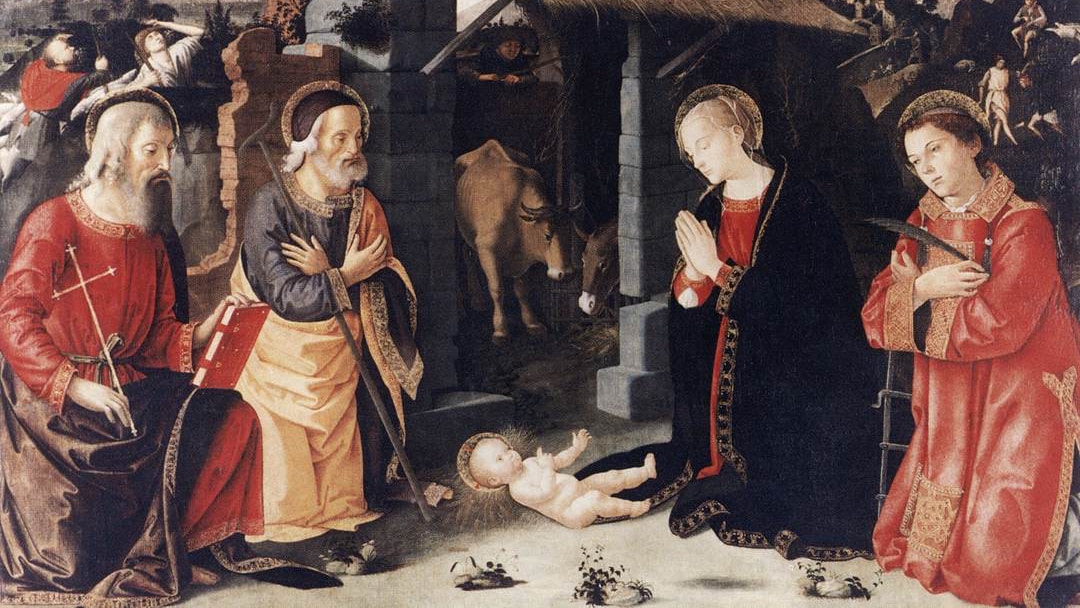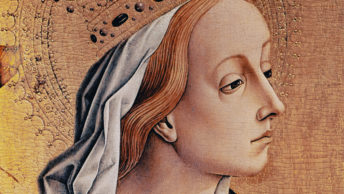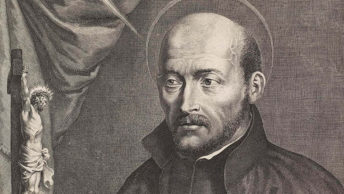In his apostolic exhortation on the call to holiness in today’s world, Gaudete et Exsultate, Pope Francis says: The saints now in God’s presence preserve their bonds of love and communion with us (no.4). As Christmas is practically on our doorstep it is high time to let the saints illumine our way to celebrate it in the most fruitful of manners.
As a Franciscan Capuchin brother, the first quote that naturally comes to my mind and heart is the Christmas meditation nicely written by Saint Pio of Pietrelcina (1887-1968). This contemporary saint has some very interesting insights to share with us in order to help us live this Christmas season intensely in God’s Spirit. In his usual direct yet affectionate mode, especially when speaking about our dear Lord, Padre Pio writes the following:
The heavenly babe suffers and cries in the crib so that for us suffering would be sweet, meritorious and accepted. He deprives himself of everything, in order that we may learn from him the renunciation of worldly goods and comforts. He is satisfied with humble and poor adorers, to encourage us to love poverty, and to prefer the company of the little and simple rather than the great ones of the world.
This celestial child, all meekness and sweetness, wishes to impress in our hearts by his example these sublime virtues, so that from a world that is torn and devastated an era of peace and love may spring forth. Even from the moment of his birth he reveals to us our mission, which is to scorn that which the world loves and seeks.
Oh let us prostrate ourselves before the manger, and along with the great St. Jerome, who was enflamed with the love of the infant Jesus, let us offer him all our hearts without reserve. Let us promise to follow the precepts which come to us from the grotto of Bethlehem, which teach us that everything here below is vanity of vanities, nothing but vanity.
From the above pericope one can easily draw some beneficial life lessons that surely sustain as well as strengthen our spiritual lives. First, Jesus’ humble and poor birth is a powerful reminder for you and me to detach ourselves from worldly riches. Second, his meekness, as naturally flows from the Grotto of Bethlehem, greatly guides and fortifies us to live humbly and never be the slaves of what we own. Third, Jesus’ birth is a strong and convincing impetus for us to put Him at the center of our hearts in such a way that, in his light, we are to abandon everything that our world and culture prizes as essential for living.
Another saint which can help us appreciate more and live with great faith this Christmas is, without a shadow of a doubt, Saint Augustine of Hippo (354-430). Saint Augustine has this reflection to share with us on Jesus’ nativity:
Man’s maker was made man, that He, Ruler of the stars, might nurse at His mother’s breast; that the Bread might hunger, the Fountain thirst, the Light sleep, the Way be tired on its journey; that the Truth might be accused of false witness, the Teacher be beaten with whips, the Foundation be suspended on wood; that Strength might grow weak; that the Healer might be wounded; that Life might die.
This interesting and rather ironic piece of writing is clearly illustrating Christ’s humanity. Upon reading reflectively this very profound excerpt from Saint Augustine’s writings, two things come into my mind. First, Saint Paul’s hymn that we find in his letter to the Philippians, which highly extolls Christ’s self-abasement for us:
Have this mind among yourselves, which is yours in Christ Jesus, who, though he was in the form of God, did not count equality with God a thing to be grasped, but emptied himself, taking the form of a servant, being born in the likeness of men. And being found in human form he humbled himself and became obedient unto death, even death on a cross. Therefore God has highly exalted him and bestowed on him the name which is above every name, that at the name of Jesus every knee should bow, in heaven and on earth and under the earth, and every tongue confess that Jesus Christ is Lord, to the glory of God the Father (Phil 2:5-11).
The second insight that surely Saint Augustine is pointing us at is to be found within the Christian eastern iconography milieu. Here, the manger is already showing us Christ’s cross. In his book Image and Relic: Meditating the Sacred in Early Medieval Rome, Erik Thunø writes: “On Paschal’s Cross reliquary, it is clear that the denomination of the Virgin as the regina mundi should be seen in direct connection with the Nativity scene, in which Mary’s womb coincides with the centre of the entire cross. In fact, the association between the Nativity and the Virgin regina coincides with the reliquary itself, elevating the earthly Cross to a vexillum. The historical events of the Nativity and Crucifixion thereby parallel the exaltation of the Virgin as regina and of the Cross as vexillum. These relationships, as we shall see, will prove essential to an understanding of the iconographic program of the enamelled cross”.
The last saint, whose contribution I would like to consider, is that of Saint Anthony of Padua (1195-1231). Being a Franciscan himself, from the very early days of the Franciscan movement, Saint Anthony could not miss the direct relationship between Christ’s poverty and its capacity to humble our sinful pride. He writes:
O Father, in your Truth (that is to say, in your Son, humbled, needy and homeless) you have humbled me. He was humbled in the womb of the Virgin, needy in the manger of the sheep, and homeless on the wood of the Cross. Nothing so humbles the proud sinner as the humility of Jesus Christ’s humanity.
The more I meditate on this text from Anthony, the more I realize its echo in Pope Francis’ pontificate, particularly regarding the issue of migration. When speaking to the members of the Roman Curia and giving them his annual Christmas greetings, at the Clementine Hall, on Saturday, 21 December 2019, the Pope did not mince his words by affirming that it is the Church’s duty to awaken consciences to see and make that direct connection between the Christ of the Gospel and the Christ who suffers in the migrants. He said:
The Church is thus called to remind everyone that it is not simply a matter of social or migration questions but of human persons, of our brothers and sisters who today are a symbol of all those discarded by the globalized society. She is called to testify that for God no one is a “stranger” or an “outcast”. She is called to awaken consciences slumbering in indifference to the reality of the Mediterranean Sea, which has become for many, all too many, a cemetery.
As this simple reflection tries to portray, the saints surprise us, they confound us, because by their lives they urge us to abandon a dull and dreary mediocrity (Gaudete et Exsultate, 138). Blessed are we if we let them inspire us, by their words, and, above all, by the example of their holy lives, to live this Christmas in God’s holiness!









Thank you for this article. Very timely, so necessary, so inspiring…!